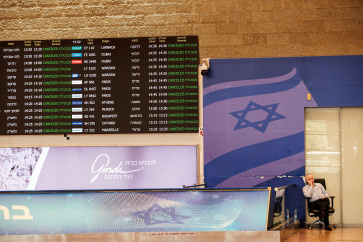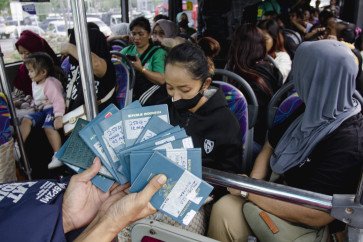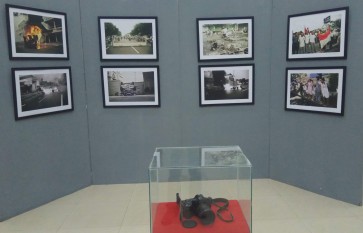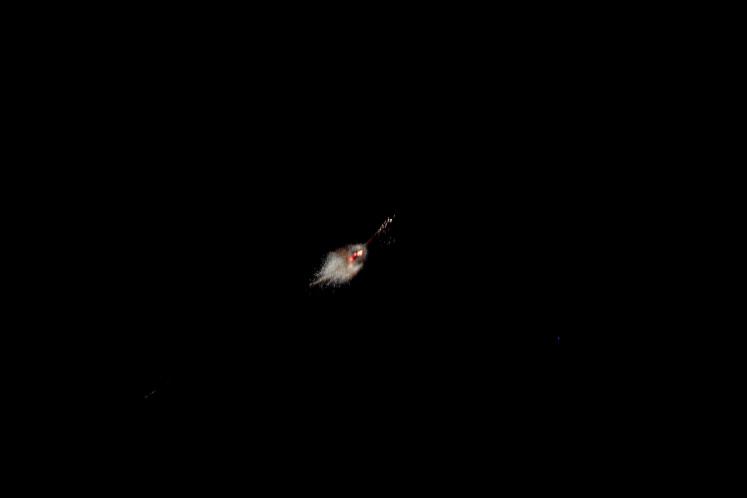Popular Reads
Top Results
Can't find what you're looking for?
View all search resultsPopular Reads
Top Results
Can't find what you're looking for?
View all search resultsGreedy Dust & 1.Spesifikasi: Reviving cassette tapes through a design perspective
Change text size
Gift Premium Articles
to Anyone

Cassette tape revivalists Delpi Suhariyanto and Arno Zarror breathe new life into a forgotten medium.
In the past few months, Arno Zarror, the man behind cassette tape-duplication initiative 1.Spesifikasi, has spent a lot of his time at the customs office in Tangerang, Banten.
1.Spesifikasi, which translates as 'one specification', chose its name to give a sense of list-like unity between its Instagram handle and captions for every post.
Arno has had to participate in a state-initiated auction to buy back the OTARI brand cassette tape-duplication machine that he bought and shipped from Japan through Zenmarket (an online shopping proxy service for shopping at Japanese auction sites).
Apparently, the machines were shipped by the seller without proper documentation.
“I ended up giving [the tape duplicators] up,” said Arno. “I think Lokananta [a state-owned records duplication company in Surakarta, Central Java] uses the same machine for its duplication services.”
Arno then spent a significant amount of time combing through a couple of major cities in Java. Following tiny leads given by enthusiasts and communities, he scoured through the remnants of the golden age of cassette tapes in Indonesia.
“He finally found people that were also in the cassette tape business back in the ‘90s who went bankrupt and then abandoned their equipment,” chimed Delpi Suhariyanto, founder of hardcore punk record label Greedy Dust.
Both Arno and Delpi went to the Bandung Institute of Technology’s art faculty and later formed a punk band together.
“There were piles of Technics M226 tape decks just sitting in the warehouse gathering dust from when they stopped operating back in 1998. I was told the number is somewhere around 400 [tape decks],” said Arno. “I’m still gathering the money to buy the [tape] decks.”
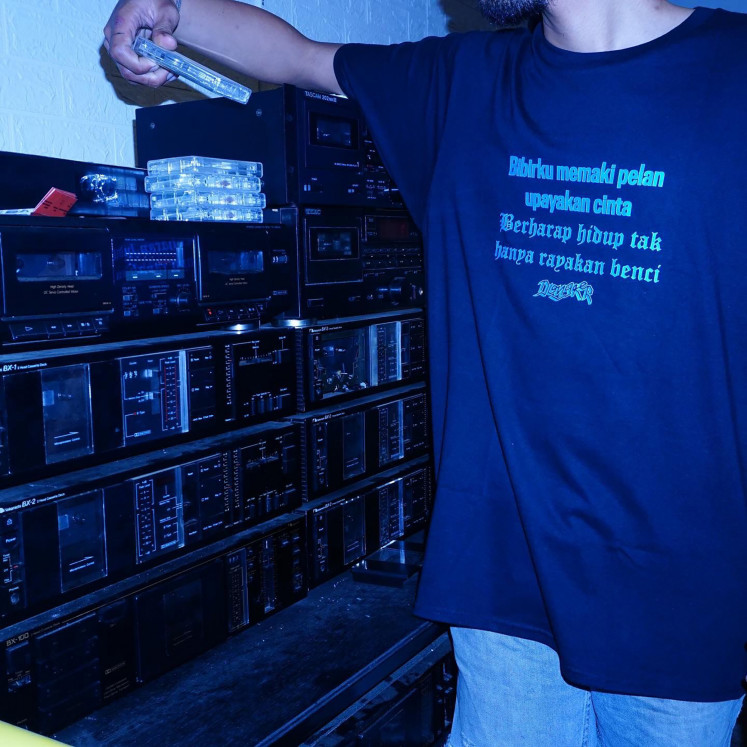
Fresh twist
In the past two years, Greedy Dust and 1.Spesifikasi have been constantly releasing music in cassette tape format with a refreshing twist. Taking a more design-conscious approach into its presentation, Delpi and Arno experimented with manual printmaking methods, such as foil stamping, screen printing, duplexing and letterpress, and combined them with the now-ubiquitous digital printing methods for their releases’ packaging.
“Arno once attached a couple of sheets [of paper] together to make a 1-meter-long cassette sleeve. Or was it more than 1 meter?” Delpi said, turning to Arno.
“It was more than 1 meter [laugh]. But it’s no longer a record since someone made a longer one,” Arno replied.
“The sleeve is rolled and goes outside of the plastic case, around it and back [into the plastic case] again,” said Delpi, describing Greedy Dust’s release for SWEETXD — a hip-hop act hailing from Jakarta’s hardcore scene.
“Since 1.Spesifikasi was founded, we agreed that cassette tapes would be our main format,” Delpi added.
Aside from Greedy Dust’s vendor being his own friend, 1.Spesifikasi is open to accommodate designs that are more difficult to produce as they require a deeper technical know-how. Delpi's focus toward cassette tapes was based on his experience in releasing other formats.
“Selling CDs is really hard […] Although the production cost is relatively lower and, as a format, is more widely accepted, CDs nowadays are really hard to sell. Maybe it doesn’t scream ‘collectible’, unlike cassette tapes.”
Greedy Dust also released 7-inch vinyl records for Jakarta-based hardcore group ZIP.
“But that’s a special case. The members, the music, the artistic product that they deliver are impeccable. Selling their vinyl [records] is not hard,” said Delpi.
Delpi noted that exploring cassette tapes as a medium is relatively easier and, as he said, “It is more visually appealing. It is not quite a vintage item but it gives off the air of something collectible and it looks fairly expensive”.
Delpi wanted Greedy Dust to differentiate from other hardcore punk physical releases in Asia.
“It doesn’t always have to be ‘xerox’-ed. Usually, in Asia, hardcore bands still adopt the ‘xerox’ approach,” Delpi said, referring to the “photocopied” aesthetics that are usually identical with hardcore bands.
“The ‘xerox’ approach ends up as quite pretentious these days, in the sense that it is digital. These ideas were executed to deliver a new experience, that hardcore punk can be a bit over the odds, in terms of ideas.”
Bandung also enabled Greedy Dust and 1.Spesifikasi’s ideas to be executed and accepted.
“The scenes here are mostly harmonious. The hardcore punk scene blends in with the design crowd, the art scene and even students. Resistance toward new ideas is present in East Java, where some of the more senior members of the hardcore punk scene felt that the ‘cheap’ image needed to be preserved,” Delpi said.
Greedy Dust also has roots in East Java as he is originally from Blitar. “This sort of resistance hinders the development process and the artistic explorations of our friends in the scene, and ultimately impacts the artistic products and the scene’s sustainability itself. We need to keep the scene alive.”
“But I don’t think that the intricate design approach that we are heading to with Greedy Dust is what drives people to come to us for their duplication needs,” Arno said. He noted that there are only three clients, at most, who were willing to go the extra mile in producing cassette tapes.
“It’s hard to recall anyone other than Delpi and Greedy Dust. I think it’s a matter of reference. Lack of reference, that is”.
1.Spesifikasi also fiddled with the idea of sustainability through its prototype of recycled cassette shells, which they exhibited at Kapital Space for the 2021 Bandung Design Biennale.
“I wanted to start a discourse,” said Arno.

Recycled materials
Arno partnered with Trashsmith, a plastic recycling initiative in Bandung, and started dissecting the process of manufacturing cassette shells with recycled plastic pellets. The recycled cassette shells also come, albeit developed with different partners, with biodegradable cassette sleeves, in which he substituted conventional wood-based paper with gelatin and natural ink.
“We used avocado seeds for the black ink,” Arno said, before he honestly mentioned that he forgot what the other colors were derived from.
“I initially reached out to a community in Bali called Tribhumi, asking them to partner up and they immediately gave the recipe for the inks. Well there’s a business side to it too,” Arno continued.
He has plans to partner up with other cassette tape-duplication operations in Indonesia, should he succeed in manufacturing the recycled shells in the future, as there is still a gap in the market for colored cassette shells.
“People usually order through the National Audio Company [a tape cassette manufacturer in the United States that has been operating since 1969] or from manufacturers in China through Alibaba. “Mostly clear [cassette] shells are available here.”
Now partnering with another Bandung-based plastic recycling company, Newhun, 1.Spesifikasi is setting up to take the project further past the prototyping phase.

